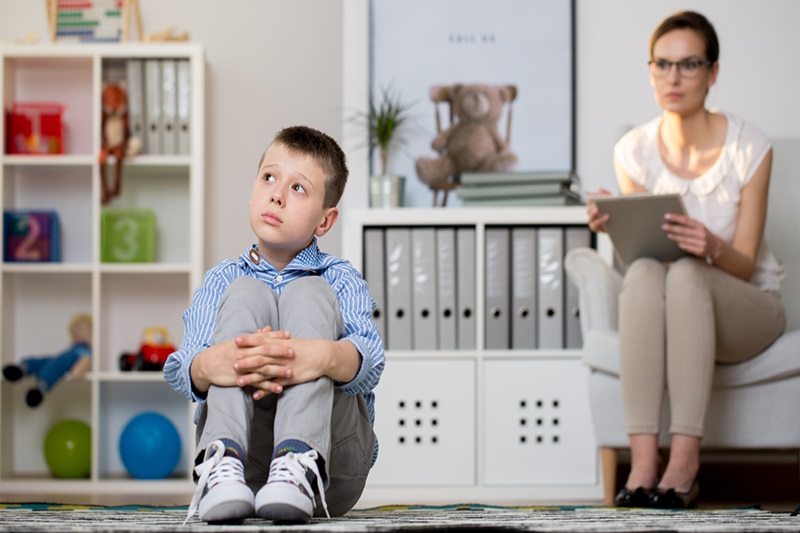
In this modern world, where moments of stillness are hard to come by, have you ever wondered how our tiny souls – children – navigate this whirlwind of activity? Are we giving them the right tools to understand their emotions, articulate them or express them? What if I told you the path leading to their emotional well-being is as colourful as a well-loaded palette? That’s right, we are exploring the inspiring world of art kids therapy for a respite in a world that sometimes spins too fast.
Art kids therapy is a therapeutic practice that encourages individuals to communicate and explore their feelings through creativity and imagination. It often forms an integral part of cognitive development and emotional expression for children. But most importantly, it nudges children from mere consumption to creation. Isn’t it exciting to envision your child painting their way through their mind’s labyrinths?
In this piece, we delve into the heart of art kids therapy, elucidating why it matters, who it’s for, how it can be integrated into their lives, and the considerable advantages and potential challenges it brings. Let’s embark on this vivid journey!
The Magic of Art Kids Therapy: Why It Matters
While words can sometimes fail us, art remains a remarkably candid and powerful medium for expression – a universal language that transcends barriers of age, culture and language. This is particularly critical in the realm of children, who often grapple to find the right words to articulate their complex feelings.
At its heart, art therapy taps into this innate creative instinct — it’s about giving a child a brush when words lose their lustre. Art kids therapy allows children to express their feelings and understand themselves in a non-verbal, pressure-free environment, reducing their stress and anxiety.
But it’s not all about emotions. Art also improves motor skills, bolsters focus and builds confidence.
Kids and Art Therapy: A Dynamic Connection
Art Therapy isn’t a one-size-fits-all hat; it’s quite the opposite. It respects the unique spirit of every child, their glaring differences, their personality hues, and it tailors the therapeutic experience to fit these myriad dimensions.
From children dealing with trauma, ADHD, autism, or mental health issues, to those wrestling with stressful life events or learning difficulties – art therapy proves to be a helpful coping mechanism. It champions their strengths, addresses their pain points, and help kids tell their story in a language they understand best – color, form, shape, and texture.
What Does Art Therapy Look Like?
Art Therapy is a colourful meander rather than a straight, stringent path. Using a medley of materials – crayons, paints, clay, papier Mache, and even digital tools – kids are freedom on a piece of paper or the pottery wheel. It is about creativity, expression, exploration; it’s about finding joy in creation.
More importantly, it provides an emotionally secure environment where the child is the primary decision-maker. This independence breeds confidence. With a trained art kids therapist present, this therapeutic practice becomes a valuable contributor to a child’s emotional growth.

Pros of Art Kids Therapy: The Colourful Benefits
Art kids therapy goes beyond creating lovely pieces of art. It’s therapeutic effects include better cognitive development, improved motor skills, and self-expression. It helps children cultivate a robust emotional vocabulary and communicate their thoughts and feelings effectively.
Even more significantly, it provides children with a coping mechanism, offering them a way out when entangled in emotional knots. Finally, it builds resilience, fostering imagination and creativity, which are key 21st-century skills.
Cons of Art Kids Therapy: The Challenges to Consider
While art kids therapy provides a wealthy benefits, it’s important to recognise its potential challenges. Enough emphasis should be placed on process over product to minimise pressure. For optimal benefits, it’s crucial to ensure a genuine interest in art; otherwise, this method may lead to further resistance or stress.
Additionally, art therapy requires guidance from trained art therapists to be effective. This requirement may pose a challenge regarding access and resources for some families. It’s, therefore, something to consider before proceeding with this therapeutic approach.
Setting up an At-Home Art Therapy Corner
Creating an art kids therapy corner at home does not require you to recreate an artist’s studio. Start with a comfy, well-lit spot that radiates positivity. Stock it with art supplies like sketch pads, paintbrushes of multiple sizes, an assortment of paints, crayons, and whatever else your kid loves. Remember, it’s all about making them feel safe, comfortable, and at home with their emotions.
An art therapeutic corner at home can be an excellent beginning, but bear in mind the irreplaceable value of a certified art therapist who brings the knowledge and sensitivity required to guide your child’s unique journey.
Conclusion: Art Therapy, The Silent Superhero
Art kids Therapy doesn’t wave magic wands; it hands them a paintbrush instead. It’s an engaging, empathetic path that helps children channel their emotions constructively and supports them in weaving their narrative. While it’s not a cure-all solution, it’s a powerful tool in helping children understand themselves and navigate their world better.
If your child is confronted with emotional hurdles, or simply needs a creative outlet, don’t hesitate to introduce them to art kids therapy. Who knows where their imagination may take them? Art has an undeniable power to heal and inspire – making it the silent superhero every child deserves. So, why not give your child the power to paint their own rainbow?





